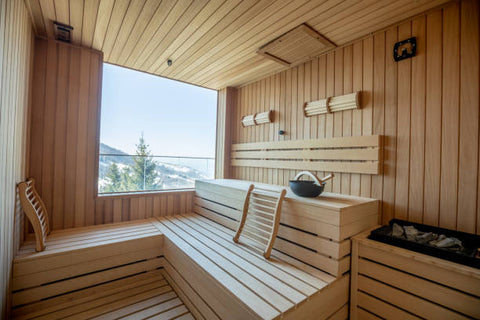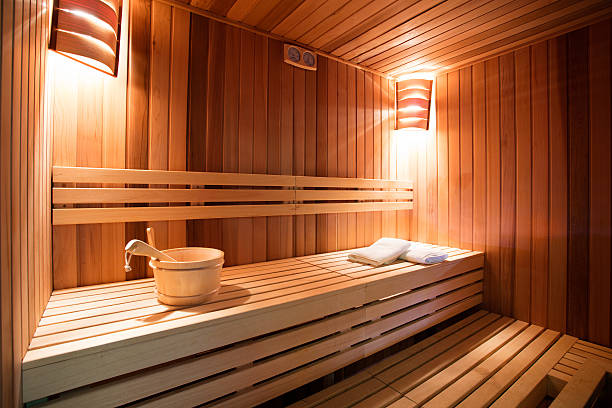Key Takeaways
· Carbonized wood delivers outstanding dimensional stability. Its altered cellular structure resists warping, shrinking, and swelling, even in high-heat, high-humidity sauna environments.
· The thermal modification process makes carbonized wood highly resistant to decay, mold, and insect attacks, supporting hygienic, long-lasting sauna construction.
· Enhanced thermal insulation means saunas retain heat more efficiently and maintain a comfortable, consistent temperature with less energy use compared to untreated wood.
· Carbonized wood has a rich, distinctive aesthetic appeal; the charring process deepens color and brings out unique wood grain patterns, creating a luxurious sauna ambiance.
· The carbonization process eliminates resin and odor, resulting in a nearly scent-free sauna experience; it’s typically environmentally sustainable, as it uses no harmful chemicals and is produced from responsibly sourced materials.
Carbonized wood, also known as thermally modified wood or charred wood, has several benefits when used in saunas. Here are some of the advantages:
Stability and Durability
Carbonized wood has improved dimensional stability compared to untreated wood. The thermal modification process alters the wood's cellular structure, reducing its moisture content and making it less prone to warping, shrinking, or swelling.
This enhanced stability ensures the wood retains its shape and quality even in the high humidity and temperature fluctuations of a sauna environment. Using carbonized wood for home sauna installation is a popular choice for both commercial and residential settings due to this performance.
For more about wood selection and sauna design, check: What Kind of Wood is Best for a Sauna?
Resistance to Decay and Insects
The carbonization process alters the wood's chemical composition, making it more resistant to decay-causing organisms, such as fungi and bacteria. Great for modern home sauna wellness centre construction.
The modified wood is less susceptible to rot, mold, and insect infestations, which is especially beneficial in the hot and humid conditions of a sauna. This kind of wood is also a favorite in luxury home sauna construction, and for those needing resilience in changing climates.
Heat Insulation
Carbonized wood has improved thermal insulation properties compared to untreated wood. It can retain heat more effectively, helping to maintain a consistent and comfortable temperature inside the sauna.
This property contributes to energy efficiency and reduces the energy required to heat the sauna. Products like carbonized poplar or pine can enhance insulation in premium builds, benefiting both indoor and outdoor infrared sauna models.
Enhanced Aesthetic Appeal
Carbonized wood has a unique and appealing appearance. The charring process creates a dark, rich color that can add a touch of elegance and sophistication to the sauna's interior.
The distinct grain patterns and textures of the wood are also more pronounced, providing a visually striking and natural ambiance. Design-focused owners often choose this material to achieve a clean, contemporary look for their home or backyard wellness space.
For more premium design tips and wood selection guidance, see: Designing a Home Sauna: Tips for Aesthetic Appeal.
Reduced Resin and Odor
The carbonization process eliminates most of the wood's resin, which is responsible for releasing odors when heated.
This results in a sauna experience with reduced or minimal scent, allowing occupants to fully relax and enjoy the sauna without any unpleasant odors. This is a significant benefit for wellness enthusiasts with scent sensitivities or allergies.

Environmental Sustainability
Carbonized wood is typically produced from sustainably sourced materials, and the thermal modification process itself is considered environmentally friendly.
The process involves using high temperatures and steam, with no additional chemicals or preservatives, minimizing the ecological impact compared to alternative treatments. Choosing carbonized wood supports eco-friendly building practices for the modern sauna user and meets increasing demand for environmentally sustainable saunas.
Sun Home Saunas sells the world's leading at home saunas, including infrared saunas, traditional saunas, and the popular infrared sauna blanket. Reach out today and find out more from our sauna experts.
FAQs
What is the best wood for a sauna?
Western Red Cedar, Hemlock, and Nordic Spruce are preferred for their natural durability and insulation, in carbonized form, they offer enhanced stability and resistance.
What is carbonized wood?
Wood heated above 392°F (200°C) in the absence of oxygen, making it more durable, resistant to rot/pests/moisture, and aesthetically distinctive.
Is carbonized wood toxic?
No. When made from untreated, natural softwoods like cedar or hemlock, it is non-toxic and safe for sauna use.
Should sauna wood be finished?
Natural woods need no finish; if a finish is desired, choose a non-toxic, sauna-specific water-based sealant to avoid fumes.
Where can I buy carbonized sauna wood?
Look for sauna supply stores, specialty lumberyards, or reputable online sellers. Verify that the product is meant for sauna installation to ensure safety and quality.






